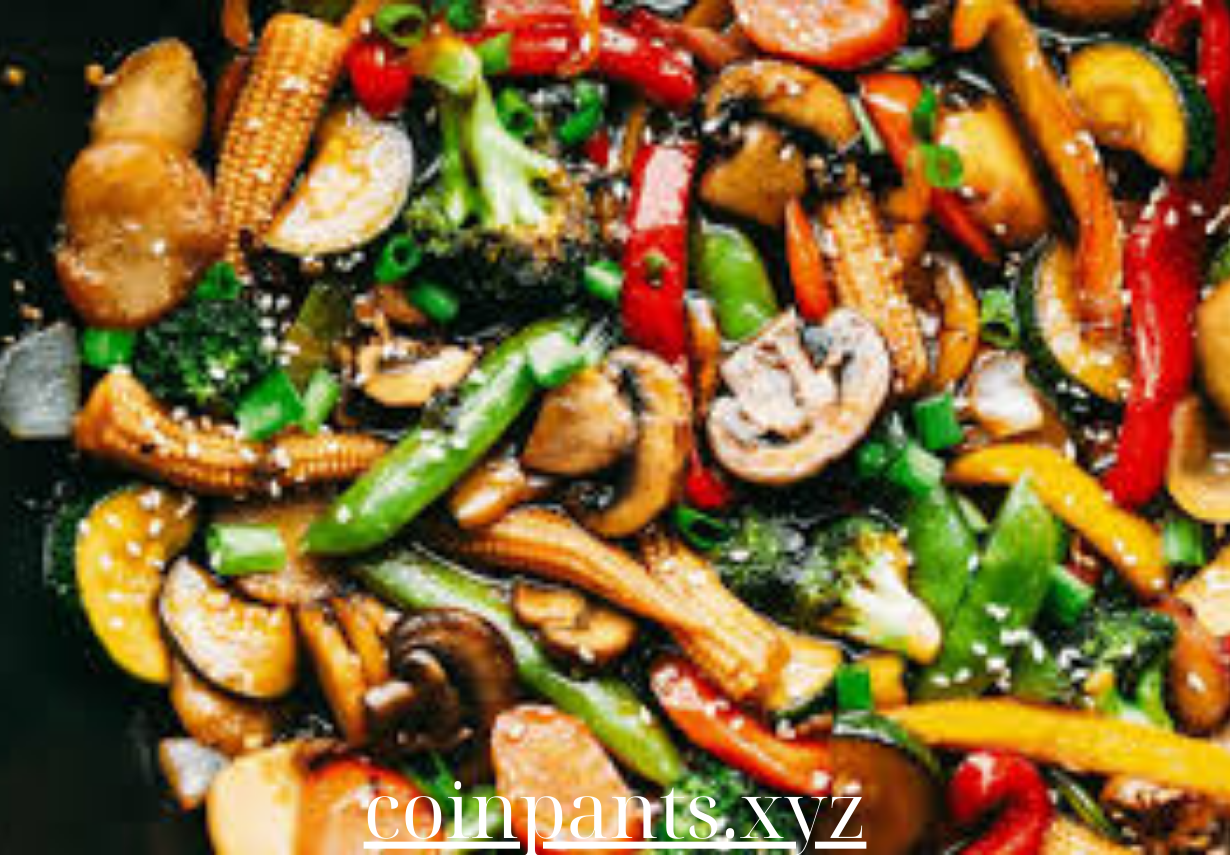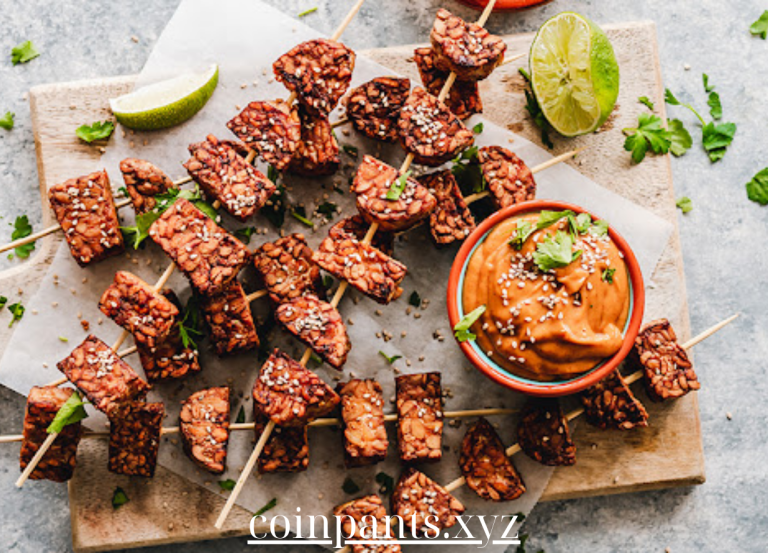
Stir-frying is one of the fastest and most versatile cooking techniques, making it perfect for creating quick and delicious vegetarian meals. This method retains the natural flavors, textures, and nutrients of vegetables while allowing you to experiment with bold sauces and seasonings. Whether you’re new to stir-frying or looking to elevate your skills, mastering a few simple techniques can help you create flavorful, restaurant-quality dishes at home. In this guide, we’ll explore vegetarian stir-frying techniques that will transform your veggies into mouthwatering meals in no time.
1. Choose the Right Vegetables for Stir-Frying
Not all vegetables cook at the same speed, so choosing the right ones and preparing them correctly is key to making a perfectly balanced stir-fry.
- Best vegetables for stir-frying: Vegetables that have a firm texture and can withstand high heat are ideal for stir-frying. Some great choices include:
- Broccoli
- Bell peppers
- Carrots
- Zucchini
- Snow peas
- Mushrooms
- Bok choy
- Cauliflower
- Asparagus
- Prep tips: Cut the vegetables into uniform pieces to ensure even cooking. Broccoli and cauliflower should be cut into small florets, while carrots and zucchini should be thinly sliced or julienned. For vegetables like bok choy, separate the leaves from the stalks, as the stalks take longer to cook.
Pro tip: Keep softer vegetables, like mushrooms and leafy greens, for the end of the stir-frying process, as they cook much faster than firmer vegetables like carrots or broccoli.
2. Use High Heat for Quick Cooking
The key to a good stir-fry is using high heat to quickly cook the vegetables while maintaining their crispness and vibrant colors. The quick cooking process also helps preserve the nutrients.
- How to stir-fry with high heat: Preheat your wok or pan on medium-high to high heat before adding any oil or ingredients. Once the pan is hot, add a small amount of high-heat oil such as peanut oil, canola oil, or grapeseed oil, which won’t break down at high temperatures.
- Why it matters: Cooking over high heat helps the vegetables develop a slight char, which enhances their flavor while keeping them crunchy. The quick sear locks in moisture, ensuring your veggies don’t become mushy.
Pro tip: Avoid overcrowding the pan, as this will lower the heat and cause the vegetables to steam rather than stir-fry. Cook in batches if needed to maintain high heat.
3. Master the Stir-Fry Timing and Layering
Timing is crucial when it comes to stir-frying vegetables. Different vegetables have different cooking times, so adding them to the pan in the right order will help everything cook evenly.
- Cooking order: Start with vegetables that take longer to cook, such as carrots, broccoli, and cauliflower. After a minute or two, add quicker-cooking vegetables like bell peppers, zucchini, and snow peas. Save softer vegetables, like mushrooms or spinach, for the final minute of cooking.
- Stir constantly: Keep the vegetables moving by stirring them constantly with a wooden spoon or spatula to ensure even cooking and prevent burning. This method also helps distribute the heat evenly across the veggies.
Pro tip: If you’re adding tofu or plant-based proteins, cook them first and set them aside, then stir-fry the vegetables. Add the protein back into the pan at the end to heat through, ensuring they stay crispy.
4. Make a Flavorful Stir-Fry Sauce
A great stir-fry is all about the sauce. A well-balanced sauce brings together the flavors of the vegetables and makes the dish satisfying and flavorful.
- Basic stir-fry sauce components: A simple stir-fry sauce typically includes:
- Soy sauce or tamari (for saltiness)
- Garlic and ginger (for aromatics)
- Rice vinegar or lime juice (for acidity)
- Brown sugar, maple syrup, or honey (for sweetness)
- Sesame oil or chili oil (for depth and heat)
- Sauce tip: For a thicker sauce, mix in a cornstarch slurry (1 tablespoon cornstarch mixed with 2 tablespoons of water) toward the end of cooking. The cornstarch will help the sauce adhere to the vegetables, creating a glossy finish.
Pro tip: Adjust the sauce to suit your taste. Add more soy sauce for saltiness, or a splash of sriracha or chili paste if you like heat.
5. Incorporate Plant-Based Proteins
To make your vegetarian stir-fry more filling and protein-rich, add plant-based proteins like tofu, tempeh, or seitan. These proteins absorb the flavors of the stir-fry and add texture to the dish.
- Tofu preparation: For best results, use firm or extra-firm tofu and press it to remove excess moisture before cooking. Cut the tofu into cubes, and pan-fry or bake it until crispy before adding it to the stir-fry.
- Tempeh and seitan: These proteins have a denser texture than tofu and can be sliced or crumbled directly into the stir-fry. Tempeh offers a nutty flavor, while seitan has a more meaty texture, making it a great substitute for meat.
Pro tip: Marinate tofu or tempeh in soy sauce, garlic, and ginger before stir-frying to infuse them with flavor.
6. Add Extra Flavor with Aromatics and Toppings
Aromatics like garlic, ginger, and green onions are essential in adding depth and complexity to your vegetarian stir-fry. Adding fresh herbs and crunchy toppings can also take your dish to the next level.
- Aromatics: Start your stir-fry by quickly sautéing minced garlic, ginger, or shallots in oil for 30 seconds to release their flavors. These ingredients serve as the base of your stir-fry and add a fragrant, savory note.
- Toppings: Finish your stir-fry with fresh garnishes like cilantro, basil, or mint. For extra crunch, sprinkle the dish with toasted sesame seeds, chopped peanuts, or crushed cashews.
Pro tip: For added flavor, drizzle your finished stir-fry with a bit of toasted sesame oil just before serving. This step enhances the nutty richness of the dish without overpowering the other flavors.
7. Serve with the Right Accompaniments
Stir-fries are best served with simple, neutral accompaniments that let the vegetables and sauce shine. Common options include:
- Rice: Steamed jasmine rice, brown rice, or basmati rice is a classic pairing for stir-fry, soaking up the flavors of the sauce. For a lower-carb option, try cauliflower rice.
- Noodles: Stir-fries also pair well with rice noodles, udon noodles, or soba noodles. Simply cook the noodles separately, then toss them into the stir-fry at the end.
- Lettuce wraps: For a lighter alternative, serve your stir-fry in lettuce wraps using crisp, fresh romaine or butter lettuce leaves.
Pro tip: If you’re using noodles, toss them directly in the pan at the end of cooking to coat them in the stir-fry sauce and heat them through.
Conclusion
By mastering these vegetarian stir-frying techniques, you can create a wide variety of quick, nutritious, and delicious veggie dishes. From choosing the right vegetables and plant-based proteins to crafting flavorful sauces and mastering timing, stir-frying offers endless possibilities for customizing your meals. Whether you’re cooking a weeknight dinner or preparing a feast for guests, stir-frying is a versatile method that brings out the best in your ingredients while keeping the process quick and easy.






